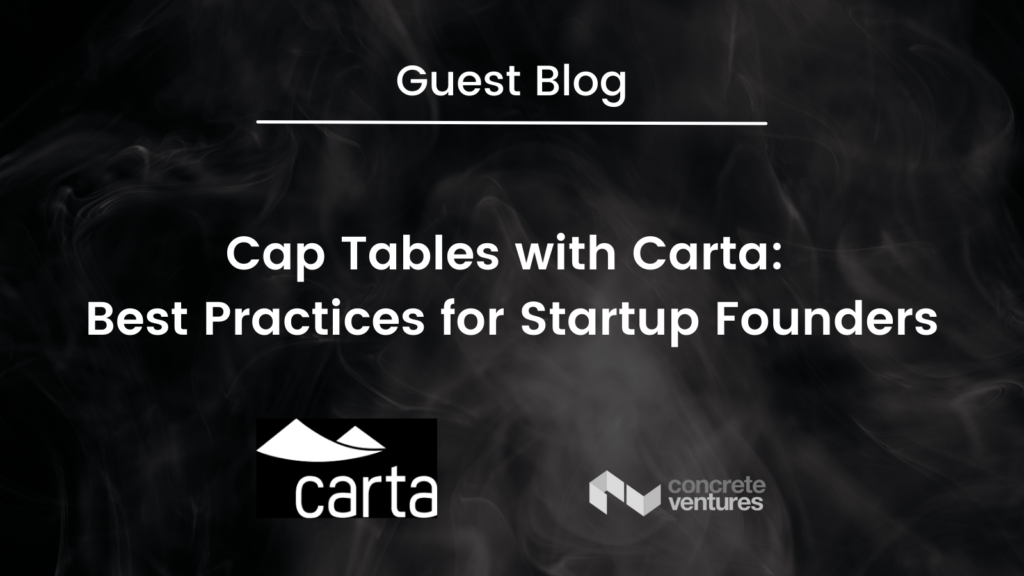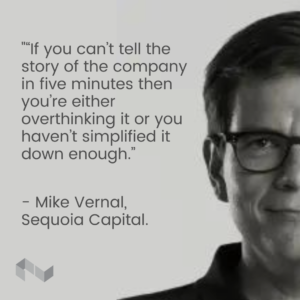
One of the first steps in forming a startup should undoubtedly be creating your cap table. But cap tables can get complicated quickly. It sounds simple, but without a good one it is far too easy to make bad equity decisions when raising money and hiring which can become costly and difficult to fix.
Whether you’re new to this topic or need a refresher, it’s often best to learn from examples and the people that think about this every day. As investors we have seen hundreds of cap-tables both good and bad – but to layer even more insights we spoke with the folks at Carta in our webinar about the topic. This post will share the learnings.
Here is what we will cover:
- What a cap table is and why it’s important for all stages of company building.
- How prospective investors will look at your cap table.
- Key terms to dive deep on.
- Common cap table mistakes and how to avoid them
- How to think about managing your cap table and tools available to you.
Structuring Your First Cap Table
A capitalization table is a tool used by startups to show the overall capital structure of their company, manage the ownership stakes of each equity holder, and keep track of every security their company has issued as well as who holds them. In short, the cap table represents your startup’s investable story.
So why should you care? Cap tables are important for many reasons:
- They help you raise money on better terms and understand your dilution.
- The cap table can help you land and retain key talent.
- They communicate what each investor and employee holds from an equity perspective.
- Clean cap tables can accelerate your VC financings.
- Your cap table will grow and expand in both size and complexity as your company grows.
- Lastly, they are a centralized repository – everyone’s source of truth when it comes to equity.
In addition, prospective investors will look at your cap table to answer many questions that will help determine whether they will invest:
- What is the ownership percentage of the founders and key employees, and how vested are they?
- Are there any founders or key employees who have moved on? What is the story?
- How much is left in your option pool? Does it need to be topped up?
- What is the turnover within this company? Are there cultural issues?
- Who are the other investors in this company, and what do they hold?
- Are there any surprising preferences or obligations I can see?
Investors tend to zero in on points 1 and 5.
Key Cap Table Terms Defined
When talking about cap tables, there are a number of terms either your lawyer, investor, or other startup folks will use. Knowing the jargon is helpful in understanding what exactly people are talking about. Let’s take a look at a few terms:
Common stock: Ordinary shares of stock, typically held by founders and employees.
Preferred stock: Shares of stock with special protections including a preference, meaning investors holding them will be paid back first in an acquisition before any common shares receive proceeds. If you ever negotiate a term sheet with an investor, you are likely negotiating the term of the preferred class of stock.
Pre-money valuation: Valuation assigned to the company for purposes of pricing new shares for investors.
Post-money valuation: Pre-money valuation for a financing round, plus the amount of new cash invested in that round. When you think about dilution, you want to know what the post-money ownership of everyone will be. This is the ownership you will have after the investment round.
Price per share: For an investment round, typically the pre-money valuation is divided by the fully diluted cap (# shares) just before that new round. Fully diluted is the key term here. It assumes all outstanding options/warrants, etc. are converted into shares. Therefore the fully diluted share count is likely higher than your current number of shares outstanding (more below).
Stock Plan allocation (option pool): Known as your ESOP, these shares are reserved for issuance to employees under a stock plan.
Fully diluted capitalization: All shares that have been or are reasonably likely to be issued, including, all shares that have been issued and remain outstanding; plus all that could be issued under outstanding options; plus the remaining available option pool.
Common Mistakes in Cap Tables and How To Avoid Them
One of the most common and most avoidable mistakes involving cap tables is not having all your documents in order. It is important to keep data organized and documents on hand. Critical documentation may include any of the following: incorporation documents, stock purchase agreements, stock plan (option pool) documentation, any convertibles you’ve issued (SAFE/KISS), and any relevant board actions (e.g. written consents).
Another common mistake involves poor planning. Take a backward design approach by delving into the critical factors that may affect cap table creation and your goals. Think about the answers to the six questions posed earlier in the article: what are investors looking for here? Share your plan and finalize your understanding of ownership with your co-founders, a well balanced cap table has many benefits. It can help founders be intentional about growth and distributing equity to employees.
As investors, one of the biggest problems we come across is when founders don’t have their cap-tables up to date. As an entrepreneur, you should manage your cap table in an offensive manner. Be ready for the next financing or hire. Don’t manage it in a defensive manner, by cleaning things up upon request. There is nothing worse than having to spend a few hundred or thousand dollars cleaning things up because you didn’t keep the cap table up to date. Mistakes like this can often kill financing deals and render your company “uninvestable”.
Structuring Equity Compensation
Understanding equity compensation is critical to attracting and retaining key talent. Equity compensation plays a critical role in building a company culture that is positive, supportive, equitable, and growth-oriented. Everyone is an owner.
The most common way of providing equity to your employees is through the option pool or ESOP. This pool represents a piece of the company that is reserved for employees. Investors will often ask you to “top up” the ESOP prior to a new financing so that there is enough equity for the key employees you need to hire post-money.
Investor communication and issuances
Certain investors may have information rights as part of their agreements. This means that they will likely ask for periodic updates about your business, including cap table equity details. To ensure clear lines of communication you can:
- Set up a cap table sharing if you are using a cap table management software
- Make it a habit to send out quarterly or biannual investor updates
- In addition to the cap table, send KPIs, financials, projections of business, etc
When building your cap table, you have to think about how you are going to manage it and the tools that are available to you. There are two main options: you can build your cap table from scratch or use cap table management software.
If you are building it from scratch, you have the benefit of building it to your precise specifications, but it can be difficult to build, collaborate on and maintain (remember, you want to be offensive, not defensive). Cap table software is the easiest way to keep your cap table updated. It does cost money but likely saves on costs in the long run.
For more on this topic, you can watch our webinar with Carta below:


